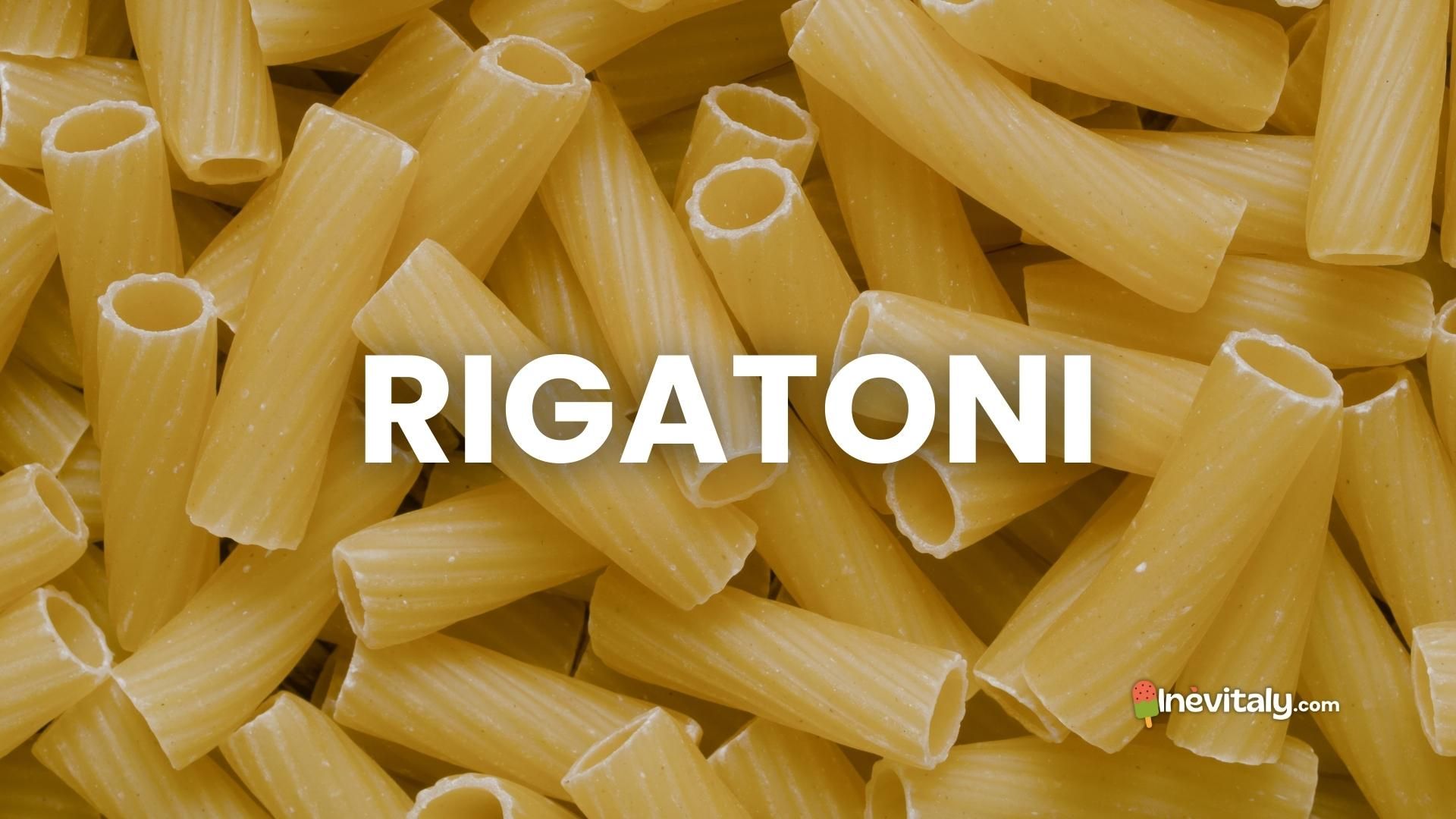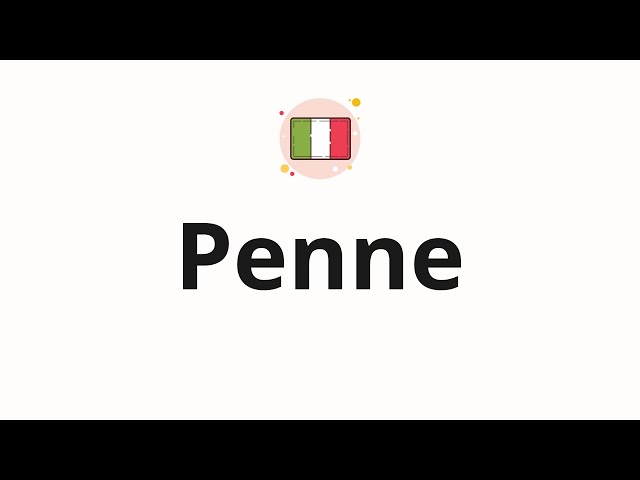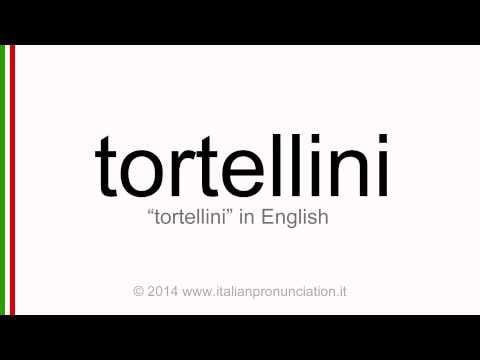Understanding Pasta Pronunciation

Pronouncing pasta names correctly can be a challenge, especially if you’re not familiar with Italian pronunciation rules. Understanding the history of pasta names and common mispronunciations can help you navigate this culinary territory with confidence. Italian pronunciation follows certain fundamental rules, focusing on vowel and consonant sounds. When it comes to pronouncing penne, it’s important to stress and elongate the double ‘n’ sound. Regional variations in pronunciation also play a role. To master the pronunciation of other pasta names like spaghetti, fettuccine, and gnocchi, it’s helpful to follow some guidelines. Practice and interactive exercises can further enhance your Italian pronunciation skills.
A Brief History Of Pasta Names Pronunciation
Italian pasta names have a rich history that dates back centuries. The pronunciation of these names has evolved over time. Traditional Italian pronunciation emphasizes the correct stressing and elongation of vowel sounds. Italian pasta names have become popular around the world, but often with mispronunciations due to different cultural and linguistic influences. It’s important to understand the history of pasta names and their correct pronunciation in order to respect and appreciate the culinary heritage of Italy. Pronouncing pasta names correctly showcases a deeper understanding and appreciation for the art of Italian cuisine.
Common Mispronunciations Of Pasta Names
Many people around the world struggle with correctly pronouncing Italian pasta names. Some common mispronunciations include pronouncing “penne” as “pen-ee” instead of “pen-neh,” “gnocchi” as “no-key” instead of “NYOH-kee,” and “spaghetti” as “spa-get-ee” instead of “spa-GHEH-tee.” These mispronunciations often stem from unfamiliarity with Italian phonetics and the correct stressing and elongation of vowel sounds. It’s important to familiarize oneself with the proper pronunciation to avoid miscommunicating and to show respect for the culinary heritage of Italy. Pronunciation guides and resources can help in mastering the correct pronunciation of various pasta names.
Basics Of Italian Pronunciation

Italian pronunciation follows a set of fundamental rules that determine the pronunciation of words, including pasta names. These rules are essential to grasp in order to pronounce pasta names accurately. Italian pronunciation emphasizes clarity and precision, and each vowel and consonant has a specific sound. It is important to learn the key vowel and consonant sounds in Italian to correctly pronounce pasta names. By understanding these basics, individuals can confidently navigate the pronunciation of various pasta names and engage in authentic conversations about Italian cuisine.
Fundamental Rules Of Italian Pronunciation
The fundamental rules of Italian pronunciation dictate the correct way to pronounce vowels and consonants in the Italian language. Each vowel and consonant has a specific sound that remains consistent across words. Vowels in Italian are pronounced with clarity and precision, and the pronunciation remains the same regardless of their position in a word. Consonants are also pronounced distinctly, and there are specific guidelines for double consonants and sounds like “gn” and “gl.” Mastering these rules is crucial for accurately pronouncing pasta names and engaging in authentic Italian conversations.
Key Vowel And Consonant Sounds In Italian
Italian has a consistent and precise pronunciation system for both vowels and consonants. Vowels are pronounced with clarity and there are five main vowel sounds in Italian: “a” as in “father,” “e” as in “pen,” “i” as in “meet,” “o” as in “hope,” and “u” as in “rule.” Consonants are also pronounced distinctly, with some slight differences compared to English. For example, “c” is pronounced like the English “ch” in words like “ciao,” and “gn” is pronounced as a single sound like the Spanish “ñ” in words like “lasagna.” Mastering these key sounds is essential for accurate Italian pronunciation.
How To Pronounce Penne

Penne is a popular type of pasta with a cylinder shape and angled ends. To pronounce “penne” correctly, follow these steps:
- Break it down into sounds: [PAST] + [UH]
- Say the first sound “PAST” using the ‘p’ sound as in “pen.”
- Then say the second sound “UH” as the short “uh” sound, like the “a” in “about” or “fun.”
Remember to say each sound clearly and confidently. Practice saying “penne” out loud and listen to native Italian speakers to perfect your pronunciation.
Correct Pronunciation Of Penne
To pronounce “penne” correctly, one should follow these steps. The word is broken down into two sounds: [PAST] + [UH]. First, the initial sound “PAST” is pronounced using the ‘p’ sound, as in “pen.” Then, the second sound “UH” is pronounced as a short “uh” sound, similar to the “a” in “about” or “fun.” It is essential to articulate each sound clearly and confidently. Practicing saying “penne” out loud and listening to native Italian speakers can help perfect one’s pronunciation.
Regional Variations In Pronouncing Penne
Regional variations in pronouncing Penne may exist due to dialects and accents within the Italian language. In some regions of Italy, such as Tuscany and Florence, the “e” in Penne may be pronounced as a closed “e” sound, similar to the “e” in “met.” However, in other regions like Naples, the “e” in Penne is pronounced as an open “e” sound, similar to the “e” in “pen.” It’s important to note that these regional variations are subtle and may not significantly impact overall understanding.
Pronunciation Tips For Other Pasta Names

When it comes to pronouncing other pasta names, there are some guidelines to keep in mind. For spaghetti, it is pronounced “SPUH-get-tee” and not “SPAG-et-tee” or “SPAG-ed-ee.” For fettuccine, say “Fet-oo-chee-nay” and not “DAR-be.” Gnocchi should be pronounced as “NYOHK-kee” and not “NOTCH-ee” or “G-KNOCK-ee.” The name “Farfalle” should be pronounced as “Far-FAHL-lay” and not “FAR-fah-leh.” Lastly, for “Orecchiette,” say “Or-ek-ee-ETT-ay” and not “Or-etch-ETT-ee.” Remember these tips to ensure you pronounce these pasta names correctly. For more examples and their English translations, refer to Preply’s comprehensive pasta name guide.
Guidelines For Saying Spaghetti, Fettuccine, And Gnocchi
When it comes to pronouncing other pasta names, there are some guidelines to keep in mind. For spaghetti, it is pronounced “SPUH-get-tee” and not “SPAG-et-tee” or “SPAG-ed-ee.” For fettuccine, say “Fet-oo-chee-nay” and not “DAR-be.” Gnocchi should be pronounced as “NYOHK-kee” and not “NOTCH-ee” or “G-KNOCK-ee.” Remember these tips to ensure you pronounce these pasta names correctly.
Tricky Pasta Names Pronunciation Explained
Pronouncing certain pasta names can be challenging due to their unique sounds and combinations of letters. One example is the word “tagliatelle,” which is pronounced “tah-lyah-TEH-leh” and not “tag-lee-a-TEL-ay” or “tag-lee-a-TEL.” Another tricky one is “orecchiette,” which should be pronounced “oh-rek-kee-ET-teh” instead of “oh-reh-KEE-tee” or “oh-REH-kee-eh-tee.” When it comes to “farfalle,” it is pronounced “far-FAH-leh” and not “far-fal-lay” or “far-fal-lee.” Remembering these pronunciations will impress your dining companions and ensure you order your favorite pasta dishes correctly.
Practice Makes Perfect

Practice Makes Perfect:
To master the art of pronouncing pasta names, practice is key. Engaging in pronunciation drills where you repeat the names of different pasta types with a focus on correct pronunciation can be beneficial. Additionally, participating in language exchanges with native Italian speakers or language exchange partners can provide an opportunity to practice pronouncing pasta names correctly in conversation. Listening to native speakers, whether through videos or podcasts, can also enhance your listening skills and help you imitate their pronunciation. Remember, perfection comes with consistent practice, so keep honing your skills to pronounce pasta names with confidence.
Interactive Exercises For Mastering Pasta Names Pronunciation
There are several interactive exercises that can help you master the pronunciation of pasta names. One effective method is to use pronunciation apps or websites that provide audio recordings and interactive quizzes specifically designed for practicing Italian pronunciation. These resources allow you to listen to the correct pronunciation of pasta names and practice saying them aloud. Another helpful exercise is to create flashcards with the names of different pasta types and practice pronouncing them accurately. You can also find online language exchange platforms where you can have conversations with native Italian speakers and practice pronouncing pasta names in a real-life setting. By engaging in these interactive exercises, you will gain confidence in pronouncing pasta names correctly.
Tips For Improving Your Italian Pronunciation Skills
Consistent practice and immersion in the Italian language are essential for improving pronunciation skills. Here are some tips for honing your Italian pronunciation:
- Immerse yourself in Italian: Surround yourself with the language by watching Italian movies, listening to Italian music, and reading Italian books or articles.
- Listen and imitate: Pay close attention to native Italian speakers as they pronounce words and phrases. Practice imitating their pronunciation to develop a natural flow.
- Practice with tongue twisters: Tongue twisters are a great way to improve your pronunciation and clarity. Look for Italian tongue twisters and practice them regularly.
- Use pronunciation resources: Utilize online resources, such as pronunciation apps or websites, that provide audio recordings and interactive exercises for practicing Italian pronunciation.
- Practice speaking with native speakers: Find language exchange partners or join conversation groups with native Italian speakers to practice speaking Italian and receive feedback on your pronunciation.
By incorporating these tips into your language learning routine, you can improve your Italian pronunciation skills and feel more confident when saying pasta names like Penne accurately.
Conclusion

In conclusion, mastering the pronunciation of pasta names is an important aspect of immersing oneself in Italian culture and enhancing the dining experience. By understanding the basics of Italian pronunciation and practicing with guidance, one can confidently pronounce pasta names like Penne and navigate through the diverse array of pasta dishes. Remember to repeat and imitate, utilize pronunciation resources, and practice speaking with native speakers. With consistent practice, anyone can improve their Italian pronunciation and enjoy authentic pasta dishes with confidence.
Summary Of Key Points On Pronunciation Tips For Pasta Names
Mastering the pronunciation of pasta names is essential for fully immersing oneself in Italian culture and enhancing the dining experience. The key points to remember when pronouncing pasta names include:
- Learn the basic rules of Italian pronunciation, including vowel and consonant sounds.
- Understand the correct pronunciation of specific pasta names like Penne, emphasizing the “neh” sound at the end.
- Be aware of regional variations in pronouncing pasta names.
- Practice regularly through pronunciation drills and conversations with native speakers.
- Utilize resources such as videos and podcasts to improve listening skills and imitate native speakers.
By following these tips, anyone can confidently pronounce pasta names and embrace the Italian culinary tradition.
Further Resources For Perfecting Your Italian Pronunciation
To further perfect your Italian pronunciation, there are plenty of resources available. You can explore language learning platforms like Duolingo, Babbel, or Rosetta Stone, which offer comprehensive Italian courses with pronunciation exercises. Online dictionaries like WordReference and Forvo provide audio pronunciations of Italian words, including pasta names. Additionally, YouTube channels such as Learn Italian with Lucrezia or Italian Pod 101 offer lessons specifically focused on Italian pronunciation. Taking advantage of these resources will help you refine your Italian pronunciation skills and master the correct pronunciation of pasta names.
FAQ About How To Say Penne: Pronouncing Pasta Names
Q: What is the correct way to pronounce “penne”?
A: The correct way to pronounce “penne” is “pen-ay.”
Q: Are there any common mispronunciations of the word “penne”?
A: Yes, common mispronunciations of “penne” include “penny,” “pen-ee,” and “pen.”
Q: Is “penne” a commonly used type of pasta?
A: Yes, “penne” is a popular type of pasta, known for its quill shape with diagonal cuts at the ends.
Q: How is “penne” pasta typically used in recipes?
A: “Penne” pasta is often used in dishes such as pasta salads, baked pasta casseroles, and pasta with tomato-based sauces.
Q: Can you provide an example sentence using the word “penne”?
A: Sure! “For dinner tonight, they decided to cook penne pasta with a creamy pesto sauce and grilled chicken.”
Q: Are there any variations of “penne” pasta available?
A: Yes, there are variations of “penne” pasta, such as whole wheat penne, gluten-free penne, and tricolor penne.
Q: What is the origin of the word “penne”?
A: The word “penne” comes from the Italian word for quills, referring to the shape of the pasta tubes.

Let’s be honest—Parma, OH has its fair share of neighborhood joints, as do the surrounding Cleveland suburbs. There are bar food offerings, happy hour, and an enjoyable environment in which to watch the Tribe and Browns.
With Sidekicks Tavern, though, you get all that and then some. You get a bar menu, a warm staff, and a great group of fun customers to hang with.
In the words of one of our favorite regulars, Sidekicks is a hidden gem.